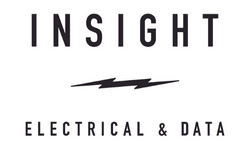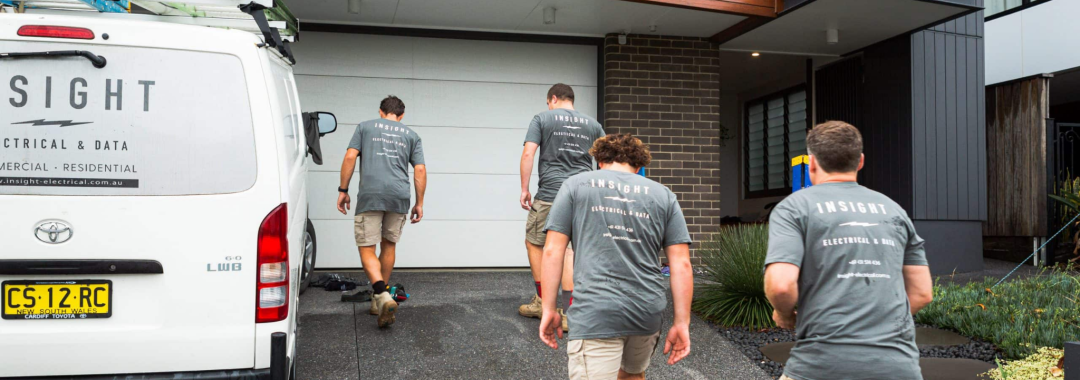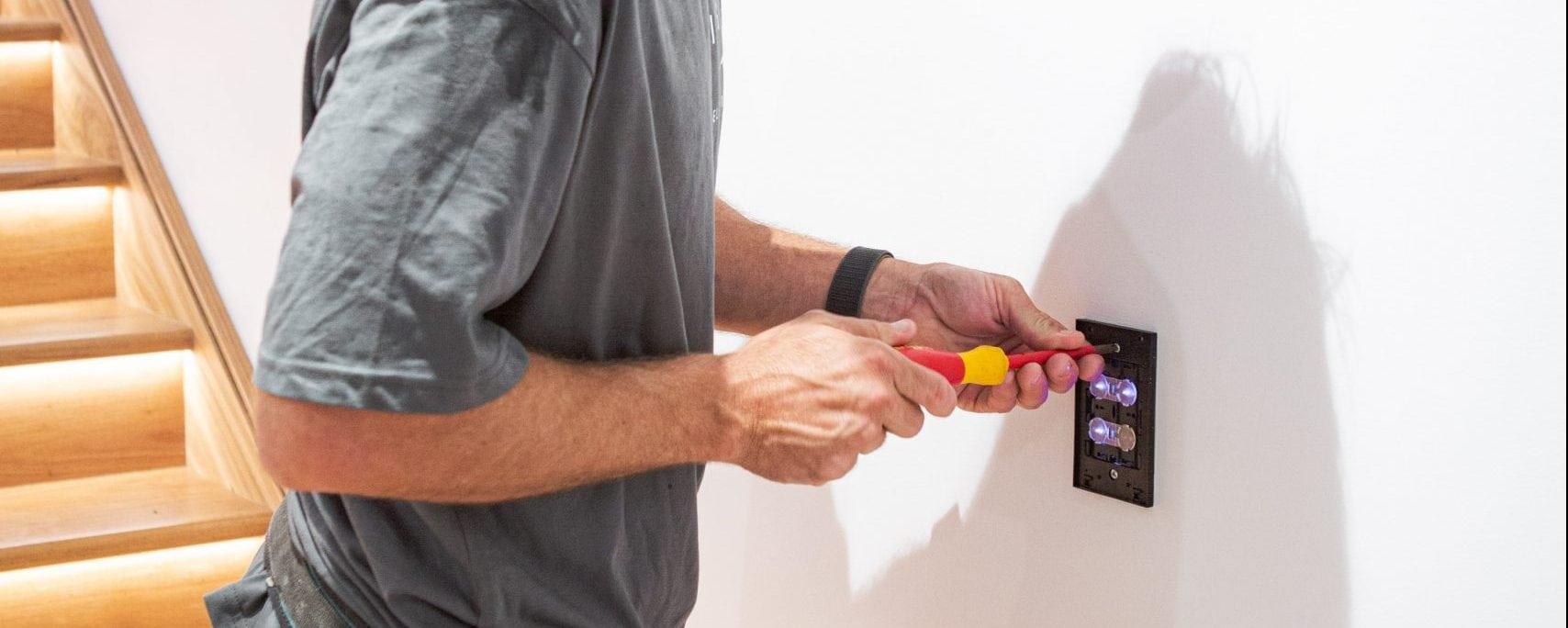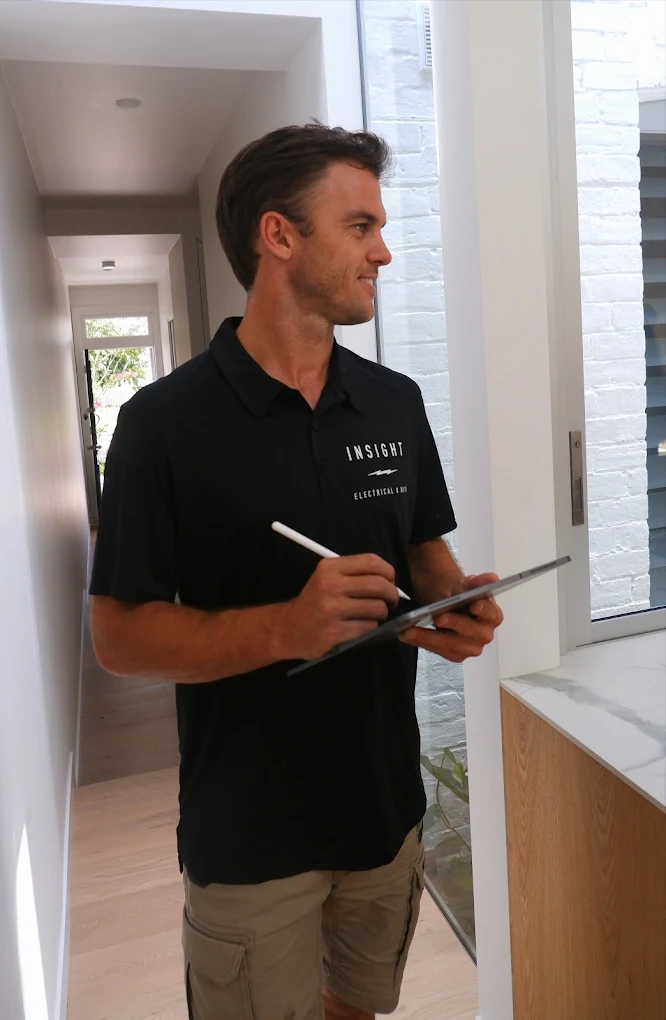Ever installed a new appliance, flipped the switch, and suddenly smelled burning plastic?
Happens more often than you’d think.
From buried wires to misplaced outlets, the most regrettable electrical mistakes usually come from one place: cutting corners. Whether it’s a rushed DIY job or just not calling the right people, these decisions end up costing more in repairs, replacements, and risk.
At Insight Electrical & Data, we help homeowners across Newcastle avoid these pitfalls from the start, keeping homes safer, smarter, and stress-free.
Mistake 1: DIY Electrical Work Without Knowing the Limits
Changing a lightbulb? Sure. Rewiring your kitchen? Not the same game.
We’ve seen everything, from tripped breakers and scorched outlets to taped-together fuses in homes around Newcastle. Most homeowners don’t mean to mess things up, but underestimating what’s behind the walls is a dangerous bet.
The truth? One wrong connection can lead to shock, fire, or costly repairs. YouTube isn’t a substitute for proper licensing.
The smarter play? Know where your skills end, and call someone who’s done it a hundred times before.
Mistake 2: Skipping Permits and Inspections
Permits aren’t red tape, they’re your safety net.
Skipping them might seem like a time-saver, but it often creates two problems:
- You risk voiding your insurance.
- Your electrical work may not meet NSW safety standards.
We’ve helped homeowners in Charlestown tear out fresh renovations just to pass retroactive inspections. Not because the job looked bad, but because it lacked the right paperwork.
What many people don’t realise: If you ever sell your home, unpermitted electrical work can delay the deal, or tank it entirely.
Smart move? Ask your electrician upfront whether a permit’s required. A solid contractor (like us) handles that part for you, no fuss.
Mistake 3: Overestimating Your Wiring Skills
Replacing an outlet might seem like a plug-and-play task. Until the circuit keeps tripping or wires start to spark.
We’ve fixed dozens of DIY jobs in Hamilton where improper grounding or lazy connections created major risks. Often, homeowners used the cheapest fittings or skipped proper testing, leaving their families exposed to shocks or fires.
Wiring isn’t just about getting it to “work.” It’s about making it work safely under all conditions.
If you don’t know what a continuity test is or when to use a terminal block, it’s time to pause and phone a professional.
Mistake 4: Swapping Breakers Without Knowing the Specs
Breakers are precision tools, not interchangeable parts.
In Warners Bay, we saw a case where someone “upgraded” their 10-amp breaker to a 20-amp breaker to stop it from tripping. The tripping was annoying, but it was doing its job. By removing that protection, they overloaded the wiring, melted insulation, and came within minutes of an attic fire.
Key point: When a breaker trips repeatedly, it’s not a defect; it’s a warning.
Only a licensed electrician can safely determine whether your system needs rewiring, a breaker upgrade, or a load-balancing fix.
Mistake 5: Ignoring the Early Warning Signs
That faint burning smell or flickering light isn’t just a glitch; it’s your home calling for help.
We’ve responded to calls in Bar Beach, where small annoyances like buzzing outlets turned out to be scorched wiring in the ceiling. No flames, yet. But close.
Things to look out for:
- Switches that feel warm to the touch
- Power points that crackle when used
- Breakers that trip without an obvious cause
- Discoloured outlets or scorched covers
Electrical systems don’t usually fail in silence. When something feels off, don’t wait.
Mistake 6: Unsafe Outlet and Wiring Habits
In Cardiff, we’ve pulled off outlet covers to find bare copper wire shoved behind the plate, no caps, no protection.
What feels like a five-minute fix can hide a risk that lives inside your wall for years.
Outlet safety isn’t just about making it function. It’s about preventing arcs, overheating, and accidental contact. We’ve replaced melted faceplates, cracked junction boxes, and burned-out terminals across Newcastle suburbs, all from casual mistakes.
Common Outlet Hazards:
- Backstabbing Wires: Pushing wires into quick-connect holes rather than using screw terminals leads to loosened connections. We’ve found this in homes around Lake Macquarie. It heats up, then burns out.
- Loose or Discoloured Sockets: If you hear a hum, see black marks, or notice plugs falling out easily, it’s past time to replace them. These signs mean the outlet is breaking down from the inside out.
Mistake 7: Misusing or Skipping Junction Boxes
Every exposed wire should be housed inside a proper junction box. But in Hamilton South, we’ve seen live wires twisted and taped inside wall cavities, no enclosures, no strain relief, no safety.
Junction boxes exist for one reason: to prevent fires and shocks.
Even if the power’s flowing now, those connections can loosen, heat up, and fail. And when they do, the damage is usually hidden, until it’s not.
Always use a box. Always secure the lid. Always use rated connectors.
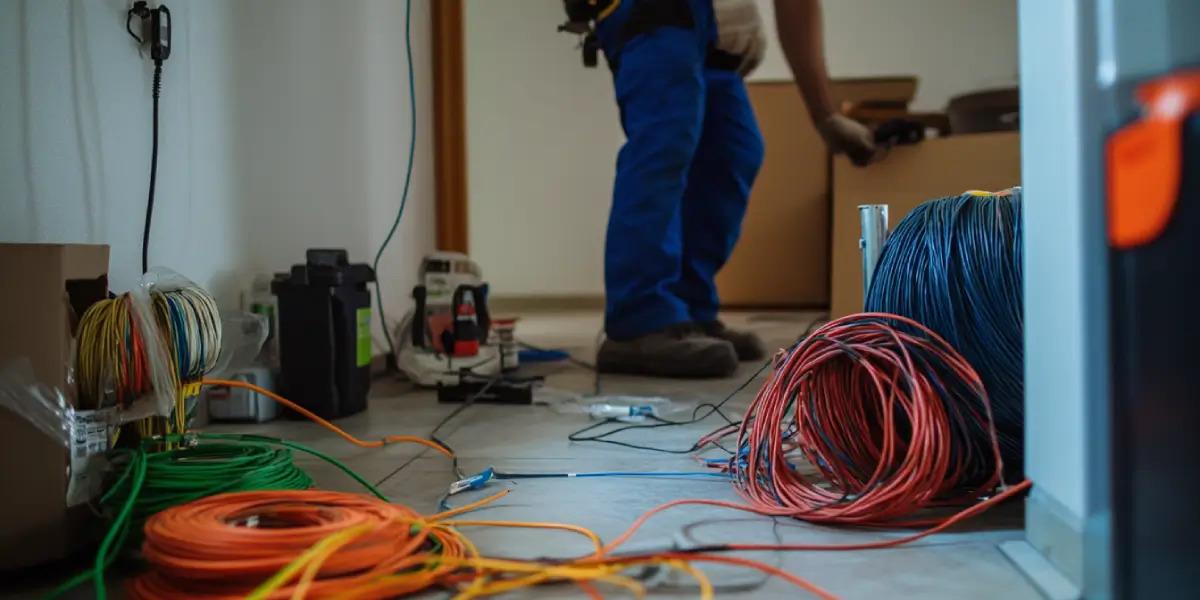
Mistake 8: Cutting Wires Too Short
Looks neat, right? Short wires, tight layout. Except now you can’t safely strip, twist, or connect anything.
In homes across Adamstown, we’ve had to rewire entire junctions simply because the original installer left too little length to work with. And in trying to extend it? Homeowners used dodgy tape splices or twisted random wires together.
Key principle: Short conductors don’t save space; they multiply risk.
When we wire, we always leave enough slack for safe, durable connections. That’s not wasteful, it’s future-proofing.
Mistake 9: Ignoring Colour Codes and Panel Labelling
Australia has strict rules around wire colours for a reason, and crossing them creates confusion or disaster.
In Mayfield West, we saw an entire lighting circuit miswired because black and blue were swapped. The lights worked, but nothing was grounded, and the neutral was carrying live voltage.
And the panel? No labels at all.
Without proper labels, you’re flying blind. It slows repairs, delays inspections, and makes emergencies harder to manage.
When we install or upgrade panels, we label every circuit. No guesswork. No crossed fingers.
Mistake 10: Overloading Circuits Without Realising It
It’s not always bad wiring; it’s bad planning.
We’ve walked into homes in New Lambton where four appliances were pulling power from a single outlet via double adapters, power boards, and a prayer. The wiring was fine. The logic wasn’t.
Here’s what most homeowners don’t realise: Circuits are designed for specific loads. Add too much, like a dryer, microwave, and portable heater all on one circuit, and you’re pushing your system beyond safe limits, even if it “still works.”
You might not notice anything at first. But over time, overloaded circuits overheat, weaken insulation, and trip breakers more often. Eventually, something gives.
Simple fix? Map out your power usage with a professional. When we upgrade switchboards or add new outlets, we assess not just what’s there, but how it’s used. That’s what keeps the setup safe and scalable.
One Wrong Wire Can Wreck More Than Your Day
Most electrical mistakes don’t explode on day one. They wait (quietly) until they fail at the worst moment.
That’s why every decision matters. Whether you’re building new, renovating, or simply adding more appliances, wiring isn’t something to “wing.”
Smart electrical planning today avoids big regrets tomorrow.
At Insight Electrical & Data, we handle everything from new installations to emergency repairs with safety, compliance, and longevity in mind.
Reach out to us here and let’s wire your home right, from the first switch.
FAQs
1. How do I know if my home’s wiring is outdated or unsafe?
Look for frequent breaker trips, buzzing switches, discoloured outlets, or light flickering. But often, the warning signs are hidden behind walls. If your home is over 20 years old and hasn’t had a proper electrical inspection, it’s worth booking one, especially before renovations or adding new appliances.
2. Can I use power boards and double adapters safely?
Yes, but sparingly. They’re meant for temporary or low-power use. Avoid stacking them or plugging in high-draw items like heaters or microwaves. If you find yourself relying on power boards in every room, it’s time to consider adding more dedicated outlets or circuits.
3. What’s involved in a switchboard upgrade, and when should I get one?
A switchboard upgrade replaces old fuse-based or limited-capacity setups with modern safety switches and better load distribution. If your board still uses ceramic fuses, lacks RCD protection, or can’t keep up with your appliances, it’s time to upgrade. It improves safety, allows for future expansion (like solar or EV chargers), and helps keep your insurance valid.
